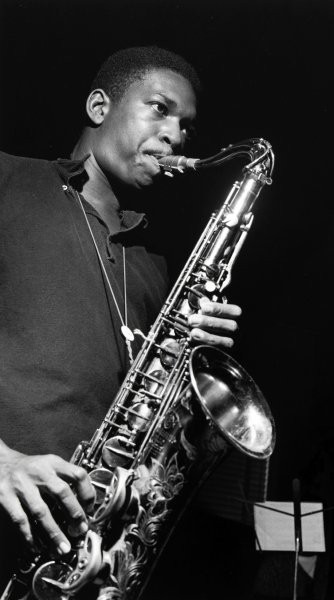Summary | Excerpt | Reviews | Beyond the Book | Read-Alikes | Genres & Themes | Author Bio

This article relates to An Inventory of Losses
 Sarah Schalansky's book An Inventory of Losses introduces readers to an eclectic group of 12 things that no longer exist, from extinct species to ruined castles. But early on, Schalansky notes that sometimes the opposite happens — something is pulled back into public consciousness after a period of dormancy. One of these things is John Coltrane's Both Directions at Once: The Lost Album.
Sarah Schalansky's book An Inventory of Losses introduces readers to an eclectic group of 12 things that no longer exist, from extinct species to ruined castles. But early on, Schalansky notes that sometimes the opposite happens — something is pulled back into public consciousness after a period of dormancy. One of these things is John Coltrane's Both Directions at Once: The Lost Album.
John Coltrane (1927-1967) is hailed as one of the greatest and most influential jazz figures of all time, shaping 20th-century music as a saxophonist, bandleader and composer. His musical inclinations were shaped at a young age from hearing spiritual music when his grandfather, an African Methodist Episcopal reverend, preached in North Carolina. In 1943 after Coltrane's father passed, he and his mother moved to Philadelphia where he enrolled in the Ornstein School of Music. Two years later, Coltrane was drafted into World War II, but he maintained focused on music and played in Naval bands during his service.
Leaving the Navy in 1945, Coltrane embarked on his professional music career. Quickly swept into the wave of other jazz icons of the time, Coltrane played in bands alongside Dizzy Gillespie (1917-1993), Miles Davis (1926-1991) and Thelonious Monk (1917-1982). Though Coltrane's musical prowess was documented in interviews and pictures, he spent little time in the recording studio in these early years. That changed in the mid-to-late 1950s. He carved out a style of his own not just as a performer but as a producer and bandleader, reliant on instrumental solos and frequent improvisation. Although groundbreaking, some critics disliked the new direction, with one referring to Coltrane's improvised solos as "extended double-time flurries notable for their lack of direction."
In 1960, Coltrane's personal life transformed in many ways. He had a spiritual awakening; broke away from the heroin addiction that had plagued him throughout the '50s; and became a supporter of civil rights, Black power, Black consciousness and pan-Africanism. With this new take on life, he assembled a band called the Classic Quartet comprised of Jimmy Garrison (bass), McCoy Tyner (piano), Elvin Jones (drums) and Coltrane himself (saxophone). Instead of backing away from his contested techniques, he embraced them. For instance, modal improvisation — working between musical modes rather than a singular tonal center — became a central element of his sound. Commanding. Vigorous. Racing. Dense. He charted new territory in experimental, avant-garde jazz, rejecting typical melodious harmonies and interjecting traditional components of slave spirituals, blues and classical European and Indian music.
It was during this period that The Classic Quartet recorded Both Directions at Once (1963) during a single-day session for Impulse! Records, but the album was never released. After Coltrane died of liver cancer in 1967 at the age of 40, it was swept into the record company's archives, idle for decades, inaccessible to the public. In the years between the recording of Both Directions at Once and his death, it is hard to know what prevented the release. Did Coltrane view it as insignificant? Was he displeased with the sound? Was there contention with the studio? No one knows.
Nevertheless, in 2018, it was released by Coltrane's family. To free jazz lovers like American jazz saxophonist Sonny Rollins, discovering this lost musical artifact from what was arguably Coltrane's creative high point was "Like finding a new room in the Great Pyramid." The album's title suggests a state of being at both the beginning and the end of something, or maybe being in the middle, always. There is a sense of seeking, probing, making sense of the world that happens in this album – or maybe it was never supposed to be an album at all, but a collection of convoluted, unresolved outtakes. Regardless of the interpretation, there is undeniably a type of push-and-pull in this nonlinear, surprisingly elegant, rhapsodic release.
To experience Coltrane's exhumed music, start with the piece "Untitled Original 11383" below.
John Coltrane, courtesy of Discogs
Filed under Music and the Arts
![]() This "beyond the book article" relates to An Inventory of Losses. It originally ran in November 2020 and has been updated for the
November 2021 paperback edition.
Go to magazine.
This "beyond the book article" relates to An Inventory of Losses. It originally ran in November 2020 and has been updated for the
November 2021 paperback edition.
Go to magazine.
Your guide toexceptional books
BookBrowse seeks out and recommends the best in contemporary fiction and nonfiction—books that not only engage and entertain but also deepen our understanding of ourselves and the world around us.